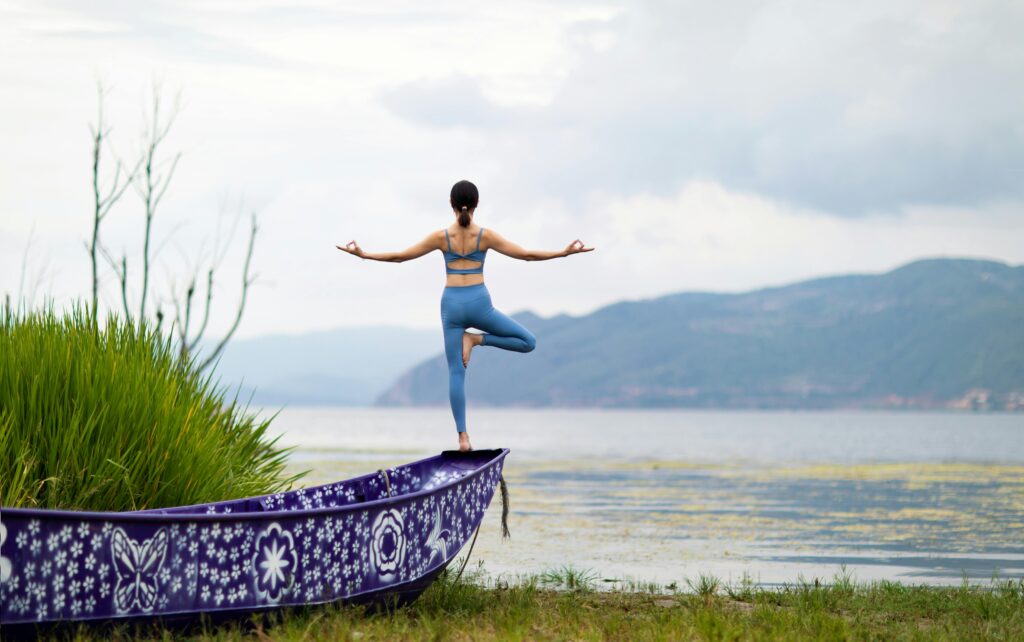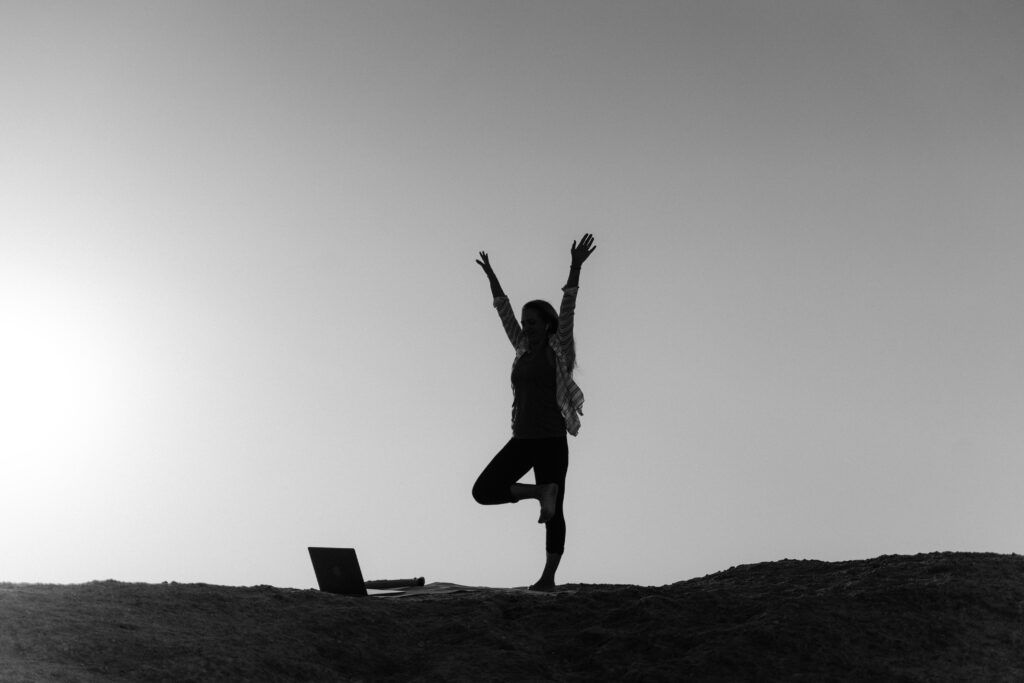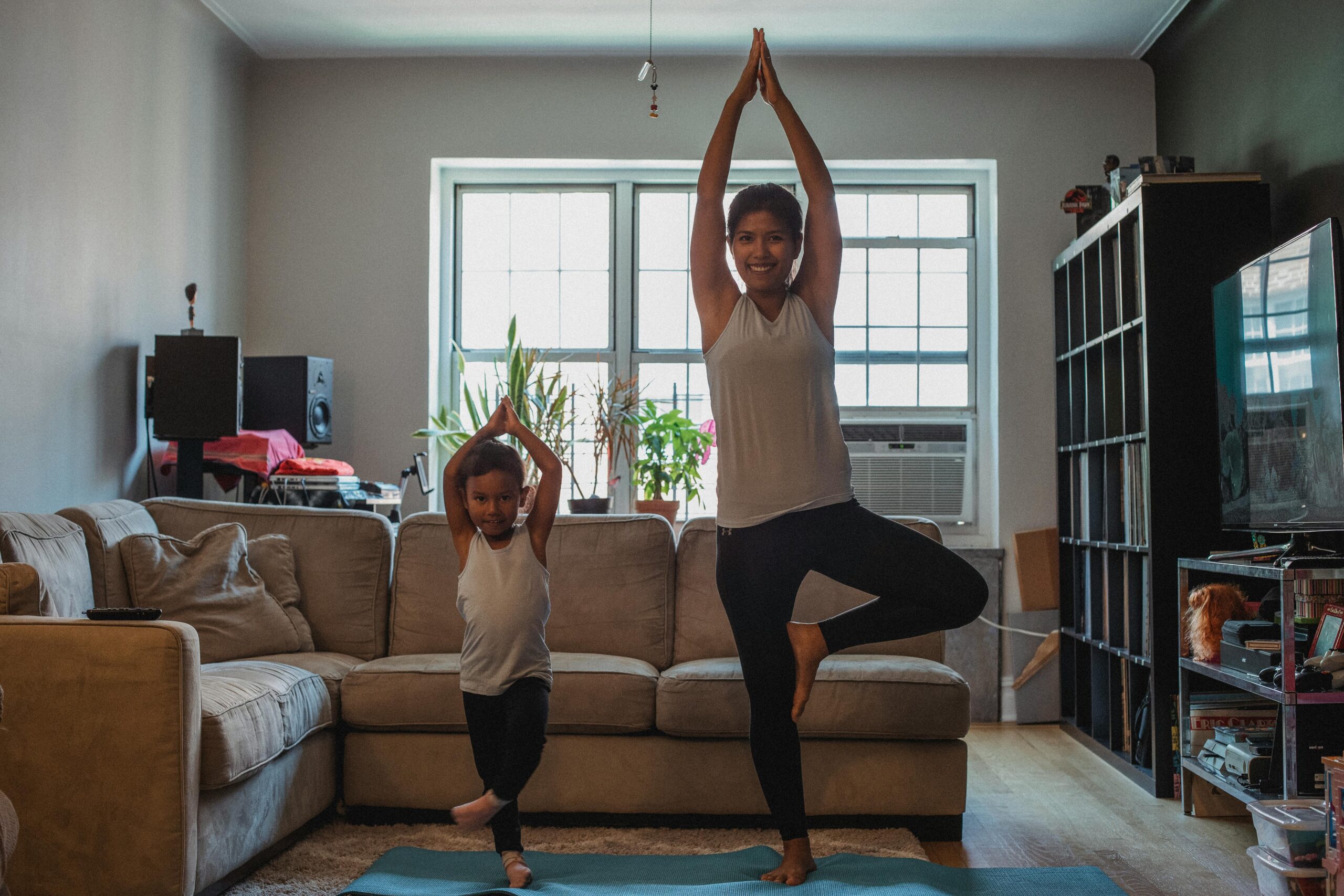Introduction to the importance of hip strength in yoga practice.

Hip strength plays a crucial role in the practice of yoga, as the hips are a major source of power and stability in many yoga poses. Strong hip muscles not only help to maintain proper alignment in poses, but also provide the foundation for balance and flexibility. In particular, poses like the Pigeon Pose, which deeply stretch the hip flexors and rotators, benefit from strong hip muscles. This pose can be challenging for those with tight hips, but with regular practice, it can help increase hip flexibility and mobility. In addition, hip strength can help prevent injuries by reducing strain on the surrounding joints and muscles. Therefore, developing and maintaining strong hip muscles is essential for a safe and effective yoga practice.
Furthermore, hip strength is vital for advancing in yoga practice, as many advanced poses require a high degree of hip flexibility and strength. Poses such as arm balances, inversions, and hip openers all rely on the strength of the hips to support the body and maintain proper form. By focusing on strengthening the hips, practitioners can improve their overall yoga practice and progress in their ability to perform more challenging poses.
In essence, hip strength is a foundational element in yoga practice that not only enhances physical performance, but also contributes to a sense of balance, stability, and well-being.
Benefits of tree pose for hip stability and flexibility.
Tree pose, or Vrksasana in Sanskrit, is a foundational yoga pose that offers numerous benefits for improving hip stability and flexibility. This pose requires the practitioner to balance on one leg while bringing the sole of the foot to rest on the inner thigh of the opposite leg, creating a deep hip opening stretch. By engaging the muscles of the standing leg and drawing the hips level, tree pose helps to strengthen the muscles around the hip joint, promoting greater stability and support. Additionally, incorporating Uttanasana walks into your practice can further enhance hip flexibility and strength. Uttanasana walks involve standing in a forward fold position and taking small steps forward and backward, which engages the hip muscles and helps to improve their flexibility and strength. By regularly practicing tree pose and Uttanasana walks, you can develop strong and flexible hips, enhancing your overall yoga practice.
Additionally, the position of the bent leg in tree pose stretches the hip flexors and adductors, increasing flexibility in these muscles and improving overall range of motion in the hips. This combination of strength and flexibility not only enhances physical performance in daily activities, but also reduces the risk of hip injuries. Furthermore, tree pose is an excellent posture for improving alignment and balance in the body, which can have a direct impact on hip stability.

By focusing on drawing the shoulders back and lifting through the crown of the head, practitioners can cultivate a sense of length and openness in the spine, which helps to correct any imbalances in the hips and pelvis. The act of balancing on one leg also challenges the proprioceptive system, which is responsible for spatial awareness and coordination. This stimulation of the proprioceptive system in tree pose can improve overall balance and stability, reducing the likelihood of falls or injuries related to poor hip function.
Additionally, incorporating stretches such as the middle splits into your routine can further enhance hip flexibility and balance. Middle splits, also known as straddle splits, involve extending the legs out to the sides as far as possible while keeping the pelvis square and the spine lengthened. This stretch targets the inner thighs and groin muscles, helping to improve hip flexibility and range of motion. Integrating middle splits into your practice can complement the benefits of tree pose, enhancing hip stability, flexibility, and overall body alignment.
Ultimately, incorporating tree pose into a regular yoga practice can lead to greater hip stability and flexibility, as well as enhanced overall well-being and physical performance.
Step-by-step guide on how to properly perform tree pose.
The tree pose, also known as Vrikshasana in Sanskrit, is a popular yoga pose that helps improve balance, concentration, and strength. To properly perform the tree pose, start by standing tall with your feet hip-width apart and arms by your sides. Shift your weight onto your right foot and lift your left foot off the ground, placing the sole of your left foot on the inside of your right thigh. Press your foot into your thigh and your thigh into your foot to create a stable foundation. Bring your hands together in front of your chest in a prayer position or extend them overhead for a more challenging variation. Find a focal point in front of you to help maintain balance and focus.
Engage your core muscles to stabilize your body and keep your hips level. Lengthen your spine and reach through the crown of your head to create a straight line from your head to your standing foot. Relax your shoulders away from your ears and breathe deeply and steadily as you hold the pose for several breaths. To release the pose, slowly lower your left foot back to the ground and return to a standing position. Repeat the pose on the other side to balance out the body.

Practice the tree pose regularly to improve your balance, strength, and mental focus. With consistent practice and mindfulness, you will be able to perform the tree pose with grace and ease.
Modifications for beginners and advanced practitioners.
Tree pose, also known as Vrksasana, is a popular yoga pose that requires balance and focus. For beginners, modifications can be made to make the pose more accessible. One modification is to place the foot on the inner calf or ankle instead of the thigh. This can provide more stability for beginners who may struggle to balance on one leg. Another modification is to use a wall or chair for support.
Additionally, incorporating front splits, or Hanumanasana, into your practice can help improve hip flexibility and prepare the body for more advanced balancing poses like tree pose. Front splits involve extending one leg forward and the other leg backward, with the hips squared and the pelvis in a neutral position. This stretch targets the hamstrings, hip flexors, and quadriceps, helping to improve overall hip mobility and balance. Integrating front splits into your routine can complement the benefits of tree pose, enhancing your ability to balance and focus while also improving hip flexibility.
Beginners can place a hand on the wall or chair to help maintain their balance while still practicing the pose. These modifications can help beginners gradually build strength and stability in their practice. For advanced practitioners, there are ways to deepen the tree pose to challenge their balance and flexibility. One modification is to bring the hands into prayer position at the heart center or extend them overhead. This can help advanced practitioners engage their core and increase the stretch in the shoulders and chest.
Another modification is to try closing the eyes while holding the pose. This can further challenge balance and concentration, requiring advanced practitioners to rely on their internal awareness and focus. By making these modifications, advanced practitioners can continue to progress in their practice and deepen their connection to their mind, body, and breath.
Tips for improving balance and alignment in tree pose.
Tree pose, also known as Vrksasana in yoga, is a popular pose for building balance, strength, and focus. To enhance balance and alignment in this posture, it is essential to start by grounding the standing foot firmly into the earth. Engaging the core muscles and lengthening the spine will help maintain stability while lifting the opposite foot to the inner thigh or calf.
Paying attention to the hips and shoulders is crucial for maintaining proper alignment and preventing any twisting or tilting. Additionally, focusing on a fixed point in front can help improve concentration and balance. Regular practice and mindful awareness of these tips will enable individuals to deepen their tree pose practice and experience the benefits of improved balance and alignment.

Variations of tree pose to challenge different muscle groups.
Tree pose, or Vrksasana in Sanskrit, is a popular yoga pose that can be modified in various ways to target different muscle groups and enhance balance and strength. One variation to challenge the core muscles is to lift the arms overhead while in tree pose, engaging the abdominals and obliques to stabilize the body. Another modification is to bring the lifted foot to rest on the inner thigh of the standing leg, instead of the calf, which requires greater hip flexibility and strengthens the adductors and hip abductors.
For more advanced practitioners, practicing tree pose on a balance board or unstable surface can further challenge the stabilizing muscles of the legs and core, improving overall proprioception and body awareness. By incorporating these variations into their practice, yogis can develop a deeper understanding of their bodies and enhance their strength and balance in a holistic way.
How hip strength in tree pose translates to other yoga poses.
Hip strength plays a crucial role in maintaining stability and balance in yoga poses, particularly in challenging postures such as tree pose. By developing strength in the hip muscles, such as the abductors and external rotators, practitioners are able to better control their pelvic alignment and maintain proper alignment in various yoga poses.
This not only enhances the stability and balance in tree pose but also translates to other standing poses such as warrior poses and balancing poses like eagle pose. Additionally, strong hip muscles help to prevent injury by supporting the lower back and knees during transitions between poses. Overall, the cultivation of hip strength in tree pose translates to improved stability, balance, and alignment across a wide range of yoga postures, making it an essential component of a well-rounded yoga practice.
Incorporating tree pose into a regular yoga routine for progress.
Incorporating the tree pose into a regular yoga routine can have numerous benefits for one’s physical and mental well-being. As a balancing pose, tree pose helps to strengthen the muscles of the legs, core, and stabilizing muscles, improving overall stability and coordination. Additionally, the act of standing tall and grounding oneself in tree pose can promote a sense of inner calm and tranquility, making it an ideal posture for reducing stress and anxiety.
By practicing tree pose regularly, individuals can enhance their mindfulness, focus, and body awareness, ultimately leading to a greater sense of overall well-being. Furthermore, the versatility and accessibility of tree pose make it suitable for yogis of all levels, making it a valuable addition to any yoga routine for progression and growth.
Precautions and contraindications for practicing tree pose safely.
Practicing tree pose, or Vrksasana, can offer a myriad of benefits for both the mind and body, including improved balance, concentration, and stronger legs. However, it is important to approach this pose with caution and awareness of any potential contraindications. Individuals with ankle or knee injuries should be careful when attempting tree pose, as the balancing on one leg could exacerbate these issues.
Additionally, those with high blood pressure or vertigo should avoid holding the pose for an extended period of time, as it may lead to dizziness. It is crucial for practitioners to listen to their bodies and modify the pose as needed, ensuring that they are practicing safely and mindfully. By taking these precautions and being mindful of any contraindications, individuals can experience the full benefits of tree pose while minimizing the risk of injury.
Conclusion on the transformative power of unlocking hip strength through yoga.
In conclusion, the transformative power of unlocking hip strength cannot be overstated. The hip joint plays a crucial role in overall mobility, stability, and posture, and strengthening this area can have a profound impact on athletic performance, injury prevention, and overall quality of life. By incorporating targeted exercises and stretching techniques into a regular fitness routine, individuals can improve their range of motion, enhance their athletic abilities, and reduce the risk of hip-related injuries.
Additionally, the benefits of unlocking hip strength extend beyond physical health, as improved mobility and flexibility can also lead to increased mental well-being and a greater sense of overall empowerment. Therefore, prioritizing hip strength in fitness regimens and rehabilitation programs can truly be a game-changer in transforming one’s physical capabilities and overall quality of life.
Bibliography
Kishore, D.M., Divya, B.R. and Manjunath, N.K. (2023). Exploring the Deeper Insights of Vrikshasana. Journal of Applied Consciousness Studies, [online] 11(1), p.60. doi:https://doi.org/10.4103/jacs.jacs_13_22.
Kishore, D.M. and Kurian, J. (2022). An Insight into the Biomechanics and Other Details of Vrikshāsanā, One of the Standing Yoga Āsanās. Asian Journal of Advanced Research and Reports, [online] 16(12), pp.93–99. doi:https://doi.org/10.9734/ajarr/2022/v16i12452.
Omkar, S., Yelluru, S. and Shanbhag, R. (2016). Understanding Vrikshasana using body mounted sensors: A statistical approach. International Journal of Yoga, 9(1), p.4. doi:https://doi.org/10.4103/0973-6131.171712.


